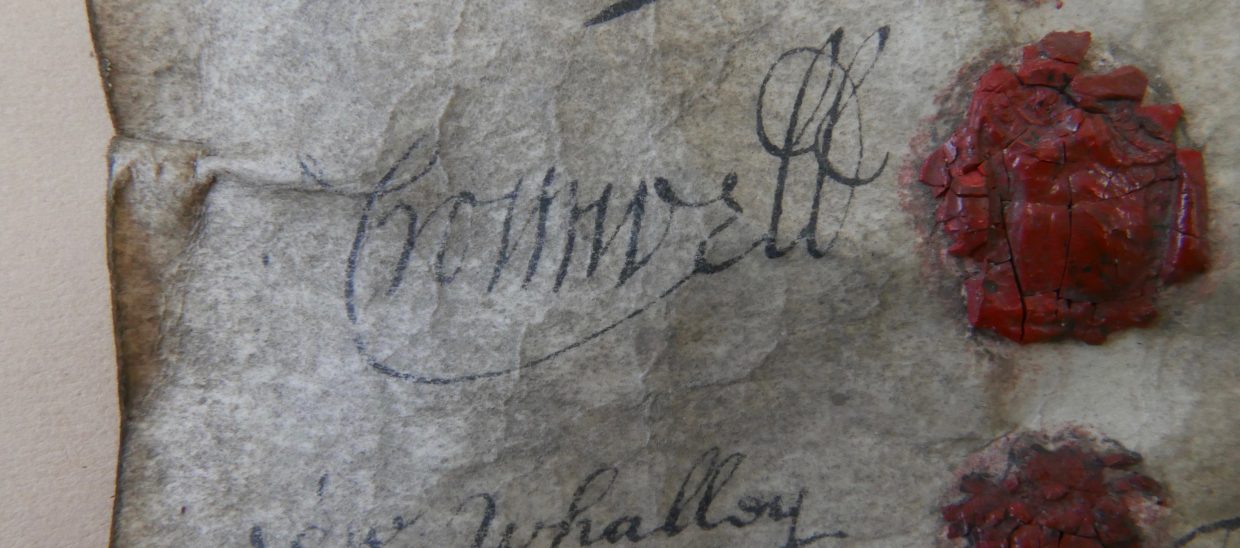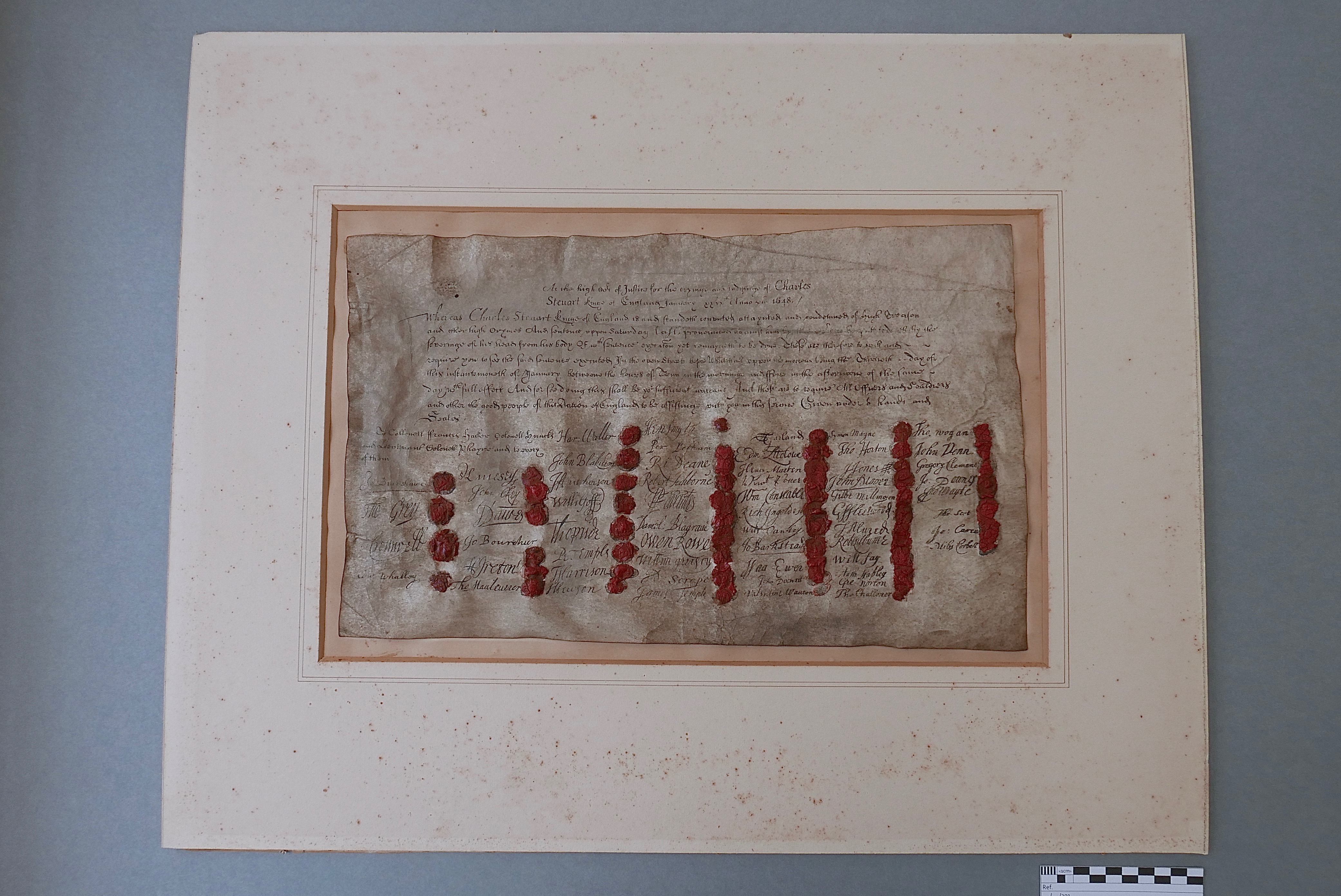 This is a copper plate printed facsimile of King Charles I’s original death warrant. It includes the twenty-four signatories and a print of their seals. The printed seals have been covered over with red wax replica seals. The mounting was visibly degrading, and the museum was worried about insect and mould damage.
This is a copper plate printed facsimile of King Charles I’s original death warrant. It includes the twenty-four signatories and a print of their seals. The printed seals have been covered over with red wax replica seals. The mounting was visibly degrading, and the museum was worried about insect and mould damage.
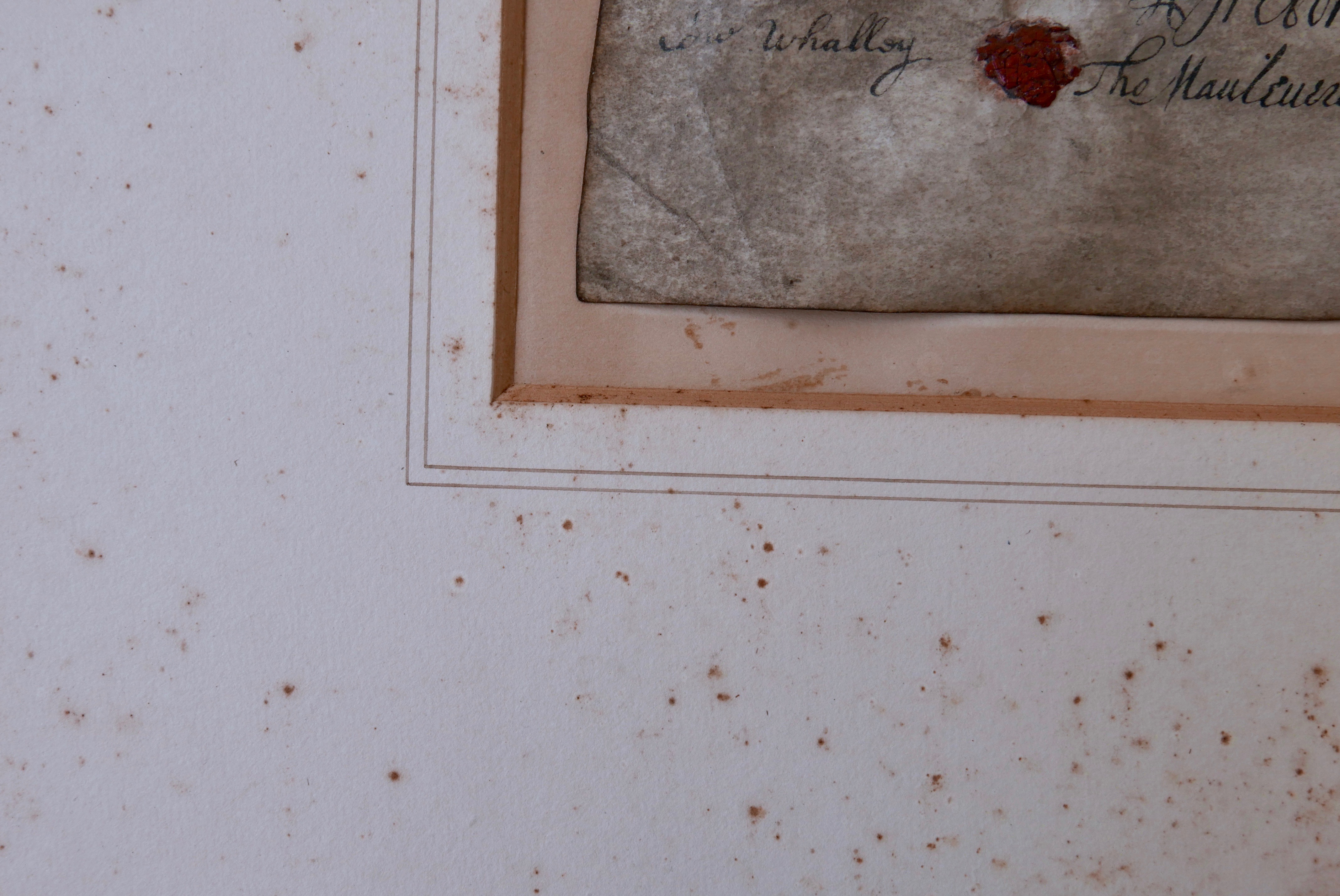
This photo clearly shows the discolored mount board and backing paper.
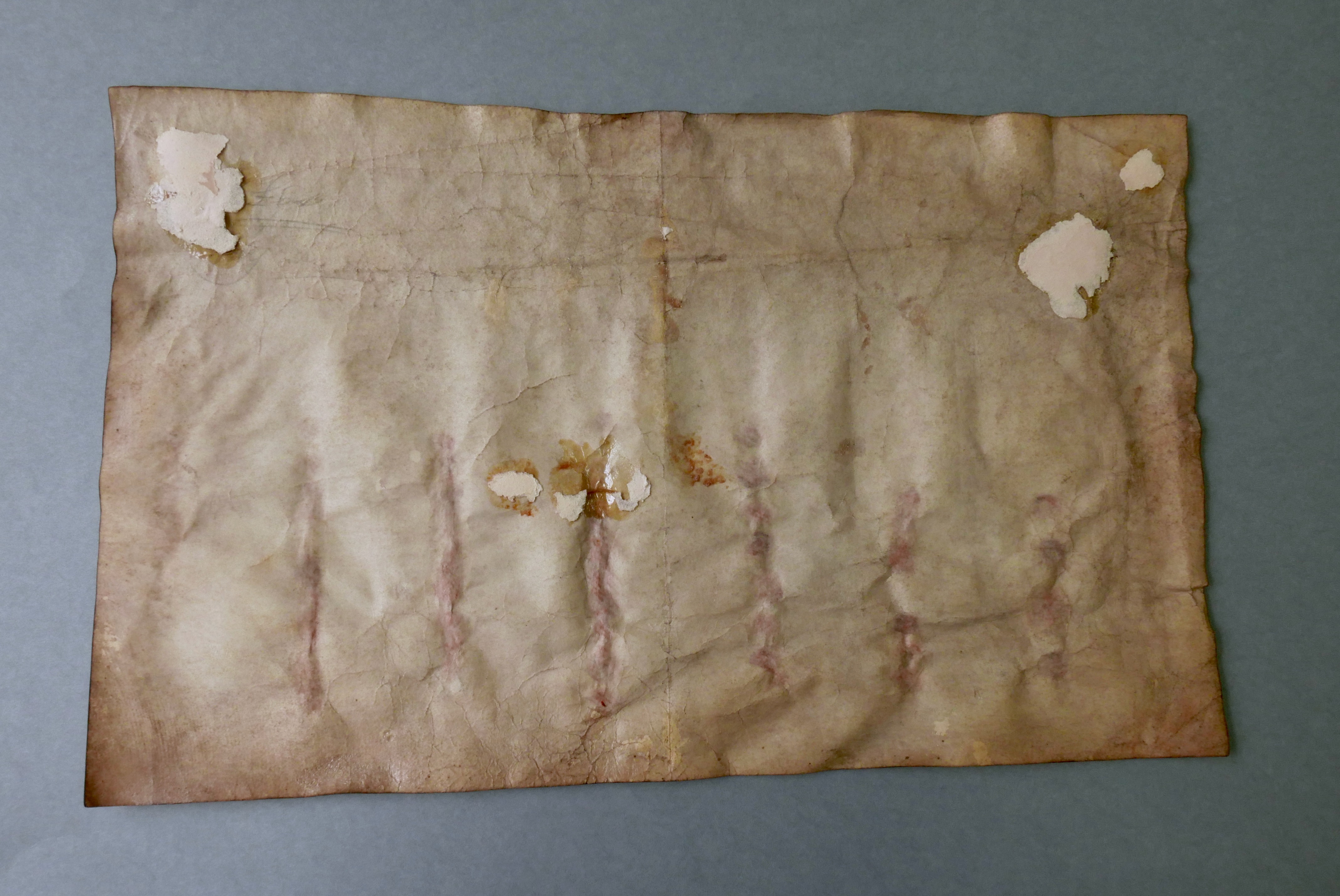
The backing paper was removed mechanically, revealing thick applications of animal glue in four locations. They were removed by softening the glue with agarose gel. The gel was allowed to sit on the site long enough to soften the top layer; the layer was carefully scraped off and the agarose was reapplied. This process continued until a thin layer of animal glue, not thick enough to distort the parchment, remained. This was left so no moisture from the agarose gel would reach the parchment during treatment.
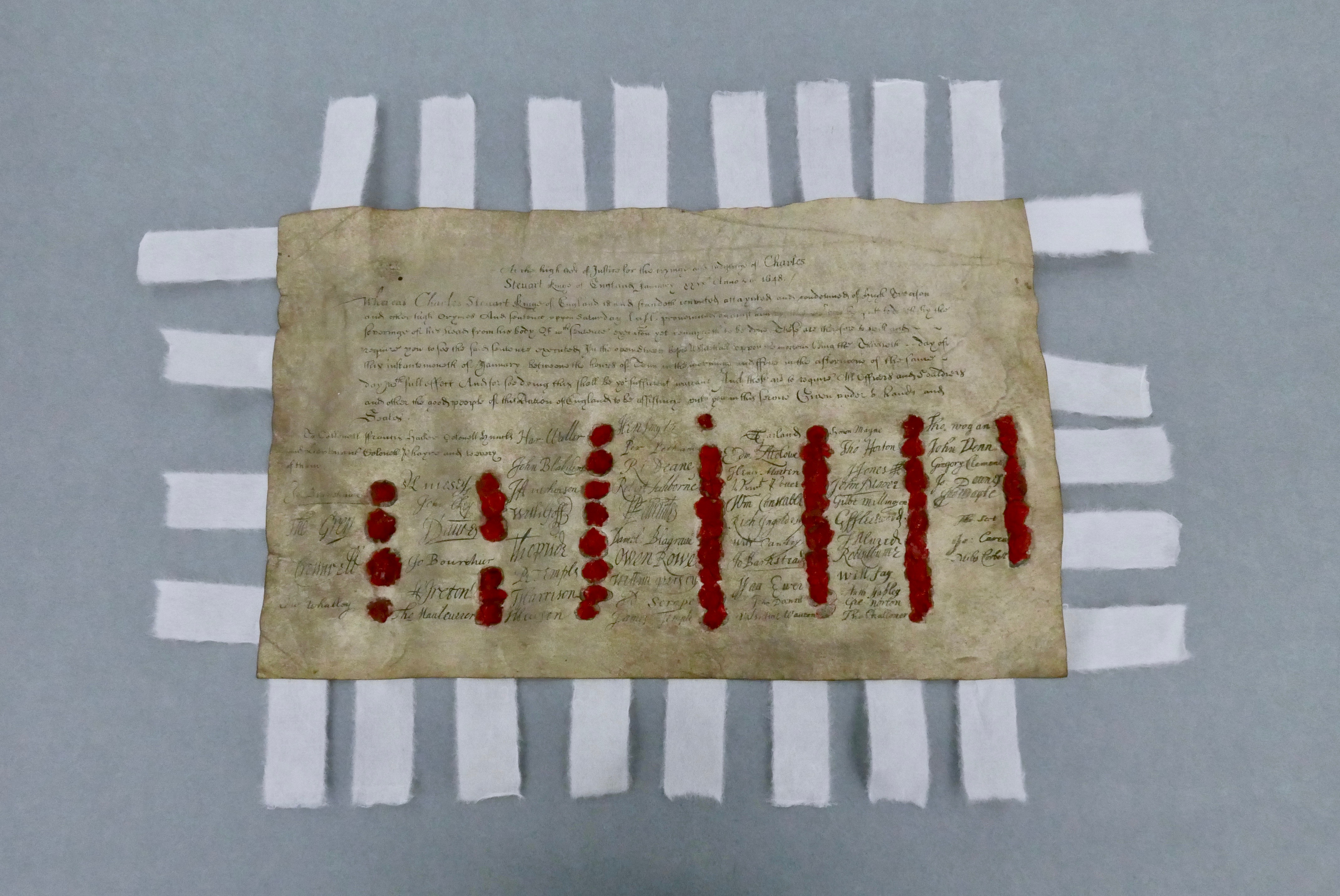
Japanese paper tabs were used to mount the warrant for framing. This was an appropriate mounting technique for this particular piece of parchment as it had proven to be dimensionally stable over several months of being out of its frame. The tabs will keep the parchment under light tension, but still allow it to expand and contract with changing environmental conditions.
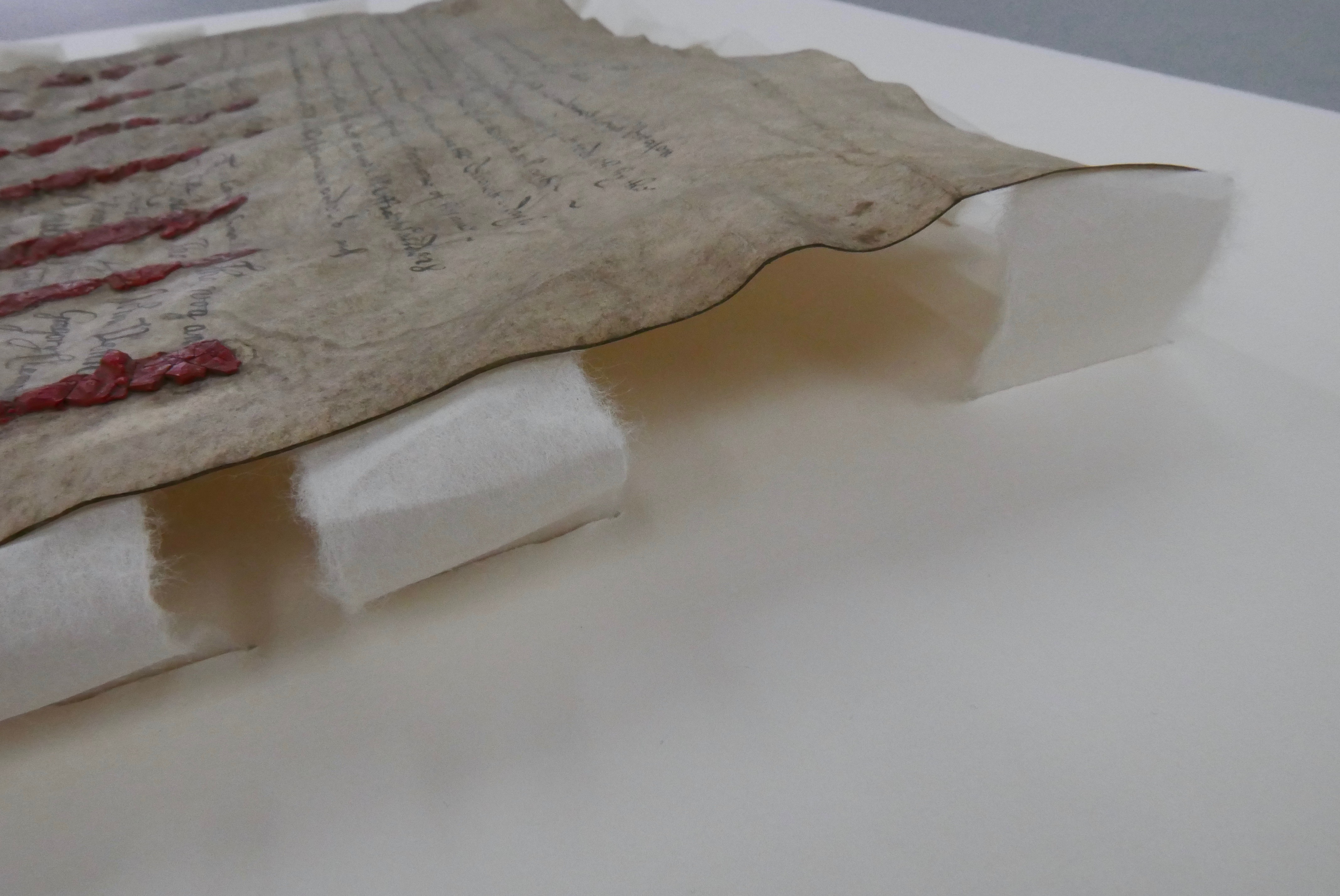
Tabs were applied approximately 2mm in from the edge of the parchment, giving the appearance of the death warrant floating in the frame. Slits were made in the backboard exactly corresponding with the tabs of Japanese paper attached to the parchment.
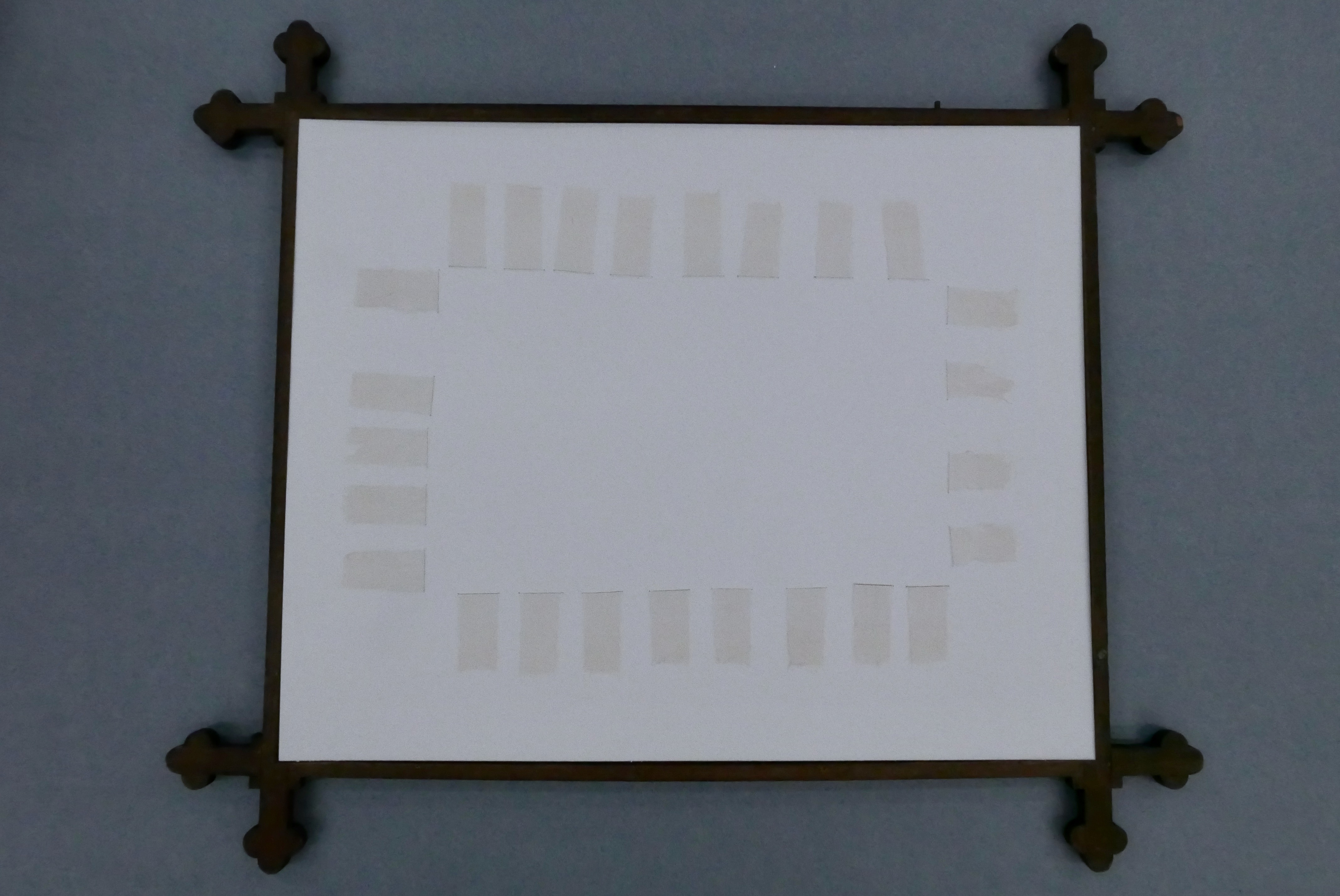
Once all of the slits were widened and the tabs thread through the board, they were pulled taut and adhered to the board using wheat starch paste.
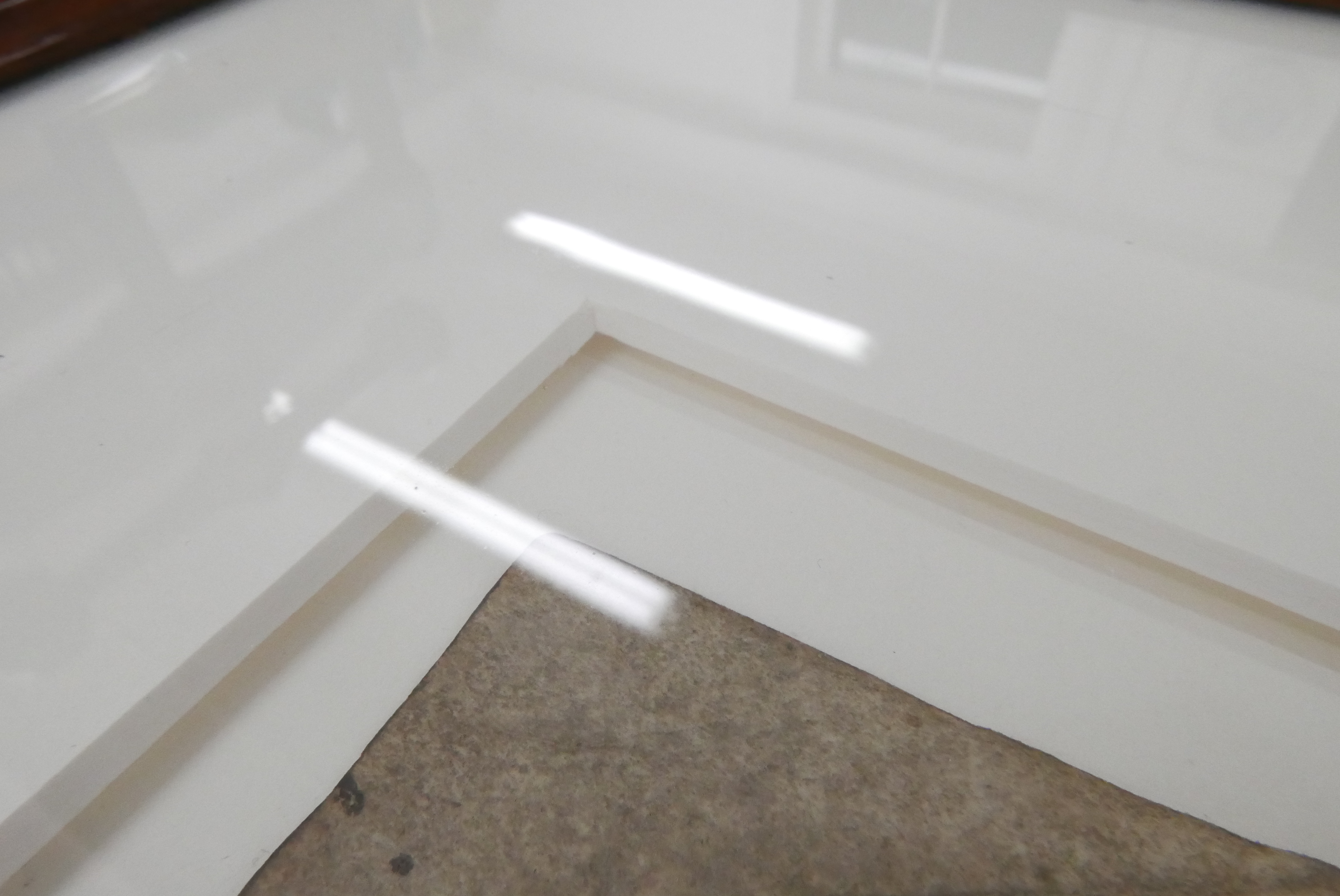
A floating mount was made to compensate for the parchment’s undulations. (Unfortunately, I forgot to photograph it until the glass was already in place.)
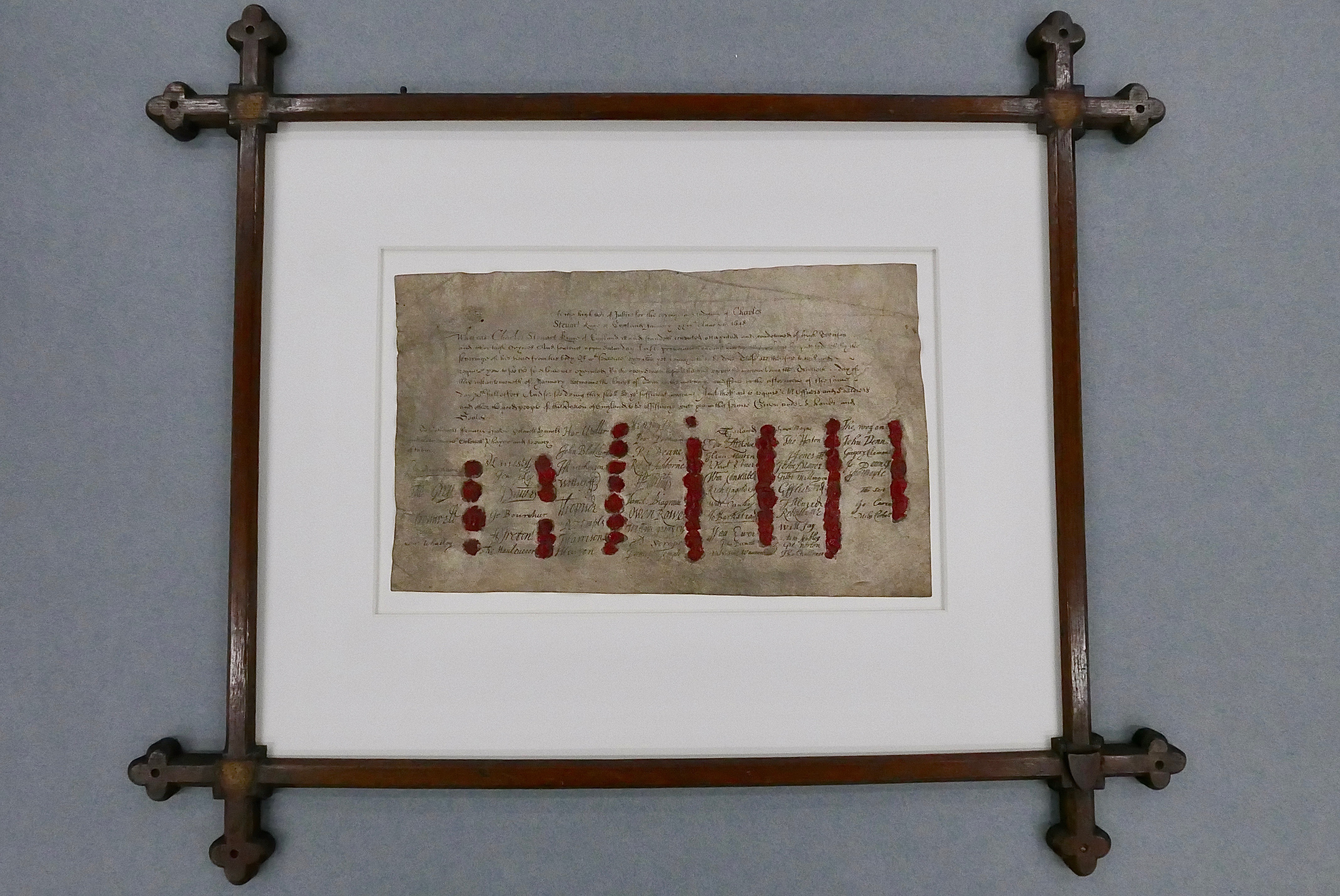
The work I did on the frame and the final mounting will be discussed in The Death Warrant: Part 2.
